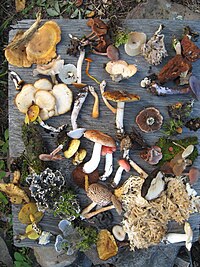
Photo from wikipedia
Biological diversity depends on the interplay between evolutionary diversification and ecological mechanisms allowing species to coexist. Current research increasingly integrates ecology and evolution over a range of timescales, but our… Click to show full abstract
Biological diversity depends on the interplay between evolutionary diversification and ecological mechanisms allowing species to coexist. Current research increasingly integrates ecology and evolution over a range of timescales, but our common conceptual framework for understanding species coexistence requires better incorporation of evolutionary processes. Here, we focus on the idea of evolutionarily stable communities (ESCs), which are theoretical endpoints of evolution in a community context. We use ESCs as a unifying framework to highlight some important but under-appreciated theoretical results, and we review empirical research relevant to these theoretical predictions. We explain how, in addition to generating diversity, evolution can also limit diversity by reducing the effectiveness of coexistence mechanisms. The coevolving traits of competing species may either diverge or converge, depending on whether the number of species in the community is low (undersaturated) or high (oversaturated) relative to the ESC. Competition in oversaturated communities can lead to extinction or neutrally coexisting, ecologically equivalent species. It is critical to consider trait evolution when investigating fundamental ecological questions like the strength of different coexistence mechanisms, the feasibility of ecologically equivalent species, and the interpretation of different patterns of trait dispersion.
Journal Title: Ecology letters
Year Published: 2018
Link to full text (if available)
Share on Social Media: Sign Up to like & get
recommendations!